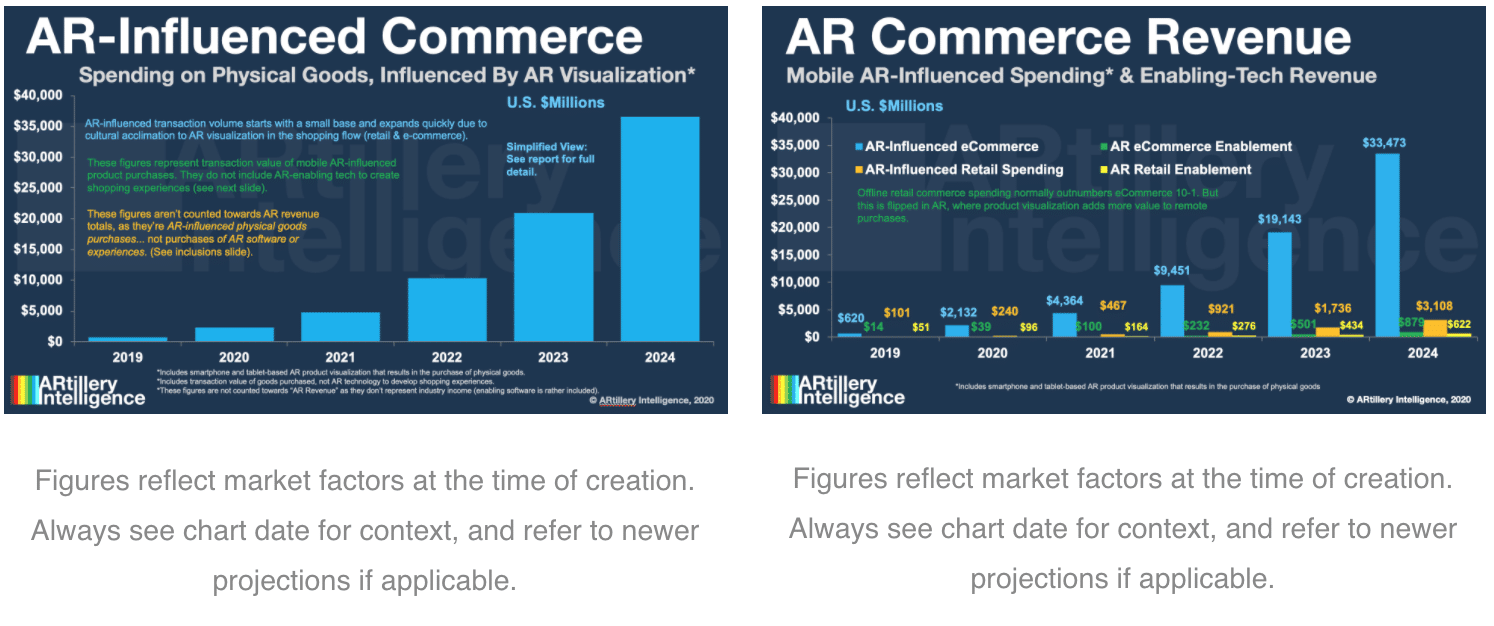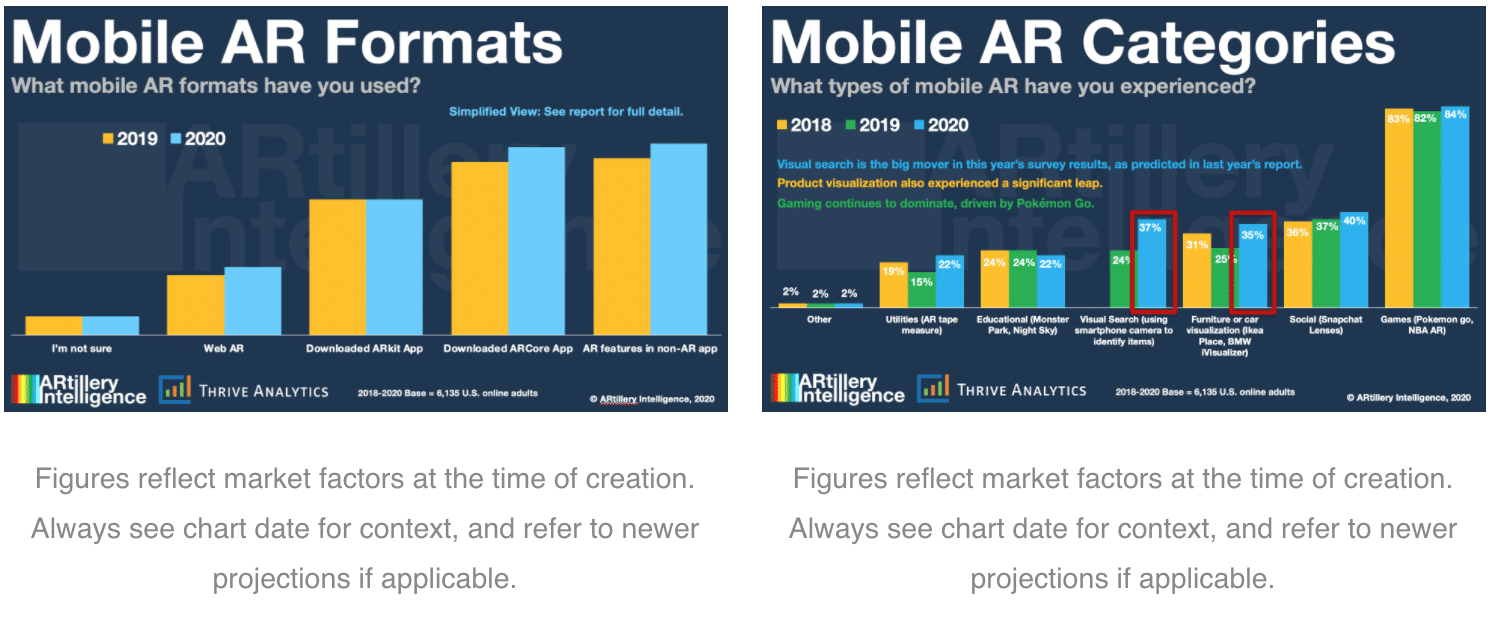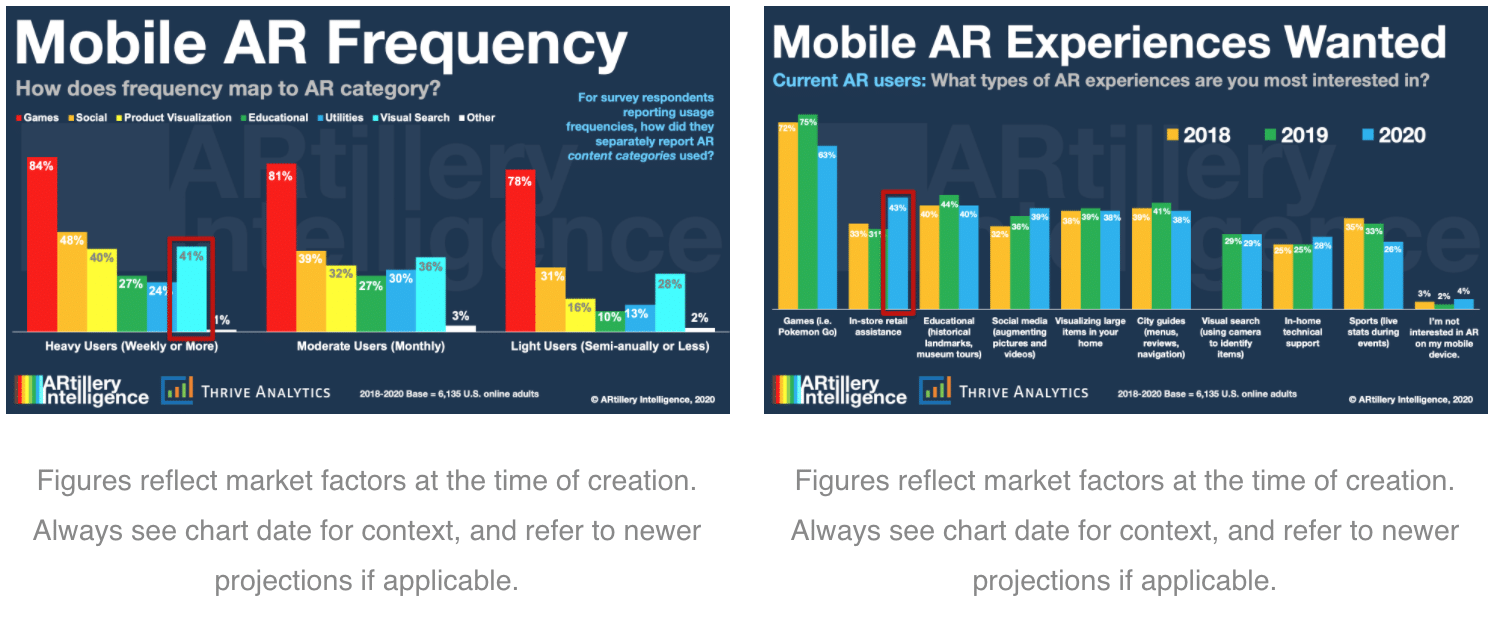
 XR Talks is a series that features the best presentations and educational videos from the XR universe. It includes embedded video, narrative analysis and top takeaways. Speakers’ opinions are their own. For a full library of indexed and educational media, subscribe to ARtillery PRO.
XR Talks is a series that features the best presentations and educational videos from the XR universe. It includes embedded video, narrative analysis and top takeaways. Speakers’ opinions are their own. For a full library of indexed and educational media, subscribe to ARtillery PRO.
Advertising continues to be a bright spot in AR’s otherwise-challenged early days. Brand spending on AR ads is on track reach $1.41 billion this year according to ARtillery Intelligence estimates, making this one of the highest-performing subsectors of the AR universe.
But the opportunity goes beyond advertising. AR will influence commerce through brands’ and retailers’ self-distributed apps for eCommerce and in-aisle retail experiences. This involves an expanding value chain from 3D product models to experience creation to distribution to analytics.
To make sense of it all, Shape Immersive ran a series of virtual events over the past few months. The takeaways were robust enough to devote a multi-part run of our XR talks series, continuing here in part 3 with a presentation from ARtillery Intelligence* (videos and takeaways below).
Key Accelerants
First off, how big is AR commerce? ARtillery Intelligence projects $36 billion in consumer spending to be influenced or aided by AR by 2024. To clarify, this isn’t “AR revenue” but rather the total transaction value of goods purchased that involve AR visualization in the purchase path.
AR revenue does come into play in the enablement software that helps drive that $36 billion. This involves AR commerce startups that work with brands; provide software to create 3D models, build AR experiences; or other functions in the developing AR commerce value chain.
Back to the $36 billion, it will grow rapidly from a small base (starting at almost zero). This projection is informed by several inputs and market signals such as the adoption pace of brands and retailers, and investment from tech giants like Google to accelerate it.

COVID-Advantaged
Another key accelerant worth mentioning is COVID-era retail lockdowns. Though the pandemic has a detrimental effect on several sectors, it could accelerate AR’s role as a shopping utility. Visualizing products in 3D gains value when we’ve lost the ability to try them on in physical stores.
As for channels, it’s a mix of social, visual search, apps and Web AR. The latter will pull ahead in later years due to less friction, and easy activation from web links and QR codes. We’re also tracking Apple and Google moves that signal AR commerce’s likely web-based orientation.
Lastly, what verticals will be most adaptive to AR commerce? They’ll map to a combination of brands’ motivation to adopt, as well as product conduciveness to AR visualization (see chart below). Exemplars so far include cosmetics, clothing, jewelry, furniture and home goods.

From the Source
All of the above is extracted from ARtillery’s Global Mobile AR Revenue Forecast. But a separate set of insights flows from its survey research. In partnership with Thrive Analytics, it fields an annual survey of 1,000+ U.S. adults on their mobile AR usage patterns and attitudes.
For example, among those who use mobile AR, what formats are they engaging with? AR-as-a-Feature took the lead for the second year in a row. This consists of AR features in non-AR apps like Snapchat Lenses. This stands to reason because it lets AR piggyback on established apps.

Drilling down one level, what types of app categories and content are resonating most? Gaming continues to lead the pack for the third year in a row, followed by Social AR. But back to the theme of AR commerce, visual search and product visualization have both spiked over past year.
This aligns with our ongoing theory that AR will move into more utilitarian and high-frequency use cases as the technology matures, including shopping utilities. That premise is further supported in the survey results that show visual search among the most high-frequency AR activities.

Touchless
AR-based shopping also comes up in consumer sentiments about what they want to see next. Overall, gaming leads these aspirational AR use cases, followed by long tail of evenly-distributed affinity areas like social media, city guides, AR shopping and in-home tech support (see above).
But it’s also notable that gaming is trending down year over year, while in-store AR shopping is trending up. Though eCommerce gets more attention when it comes to AR, this in-store retail use case could be powerful, especially as a way to support post-COVID “touchless” retail.
That covers some of the presentation highlights. For more charts and narrative analysis, see the full presentation below. Also see the full reports cited above and in the presentation: Mobile AR Global Revenue Forecast, 2019-2014; and Mobile AR Usage & Consumer Attitudes, Wave III.
*Disclosure: ARtillery Intelligence is the research arm of AR Insider.





